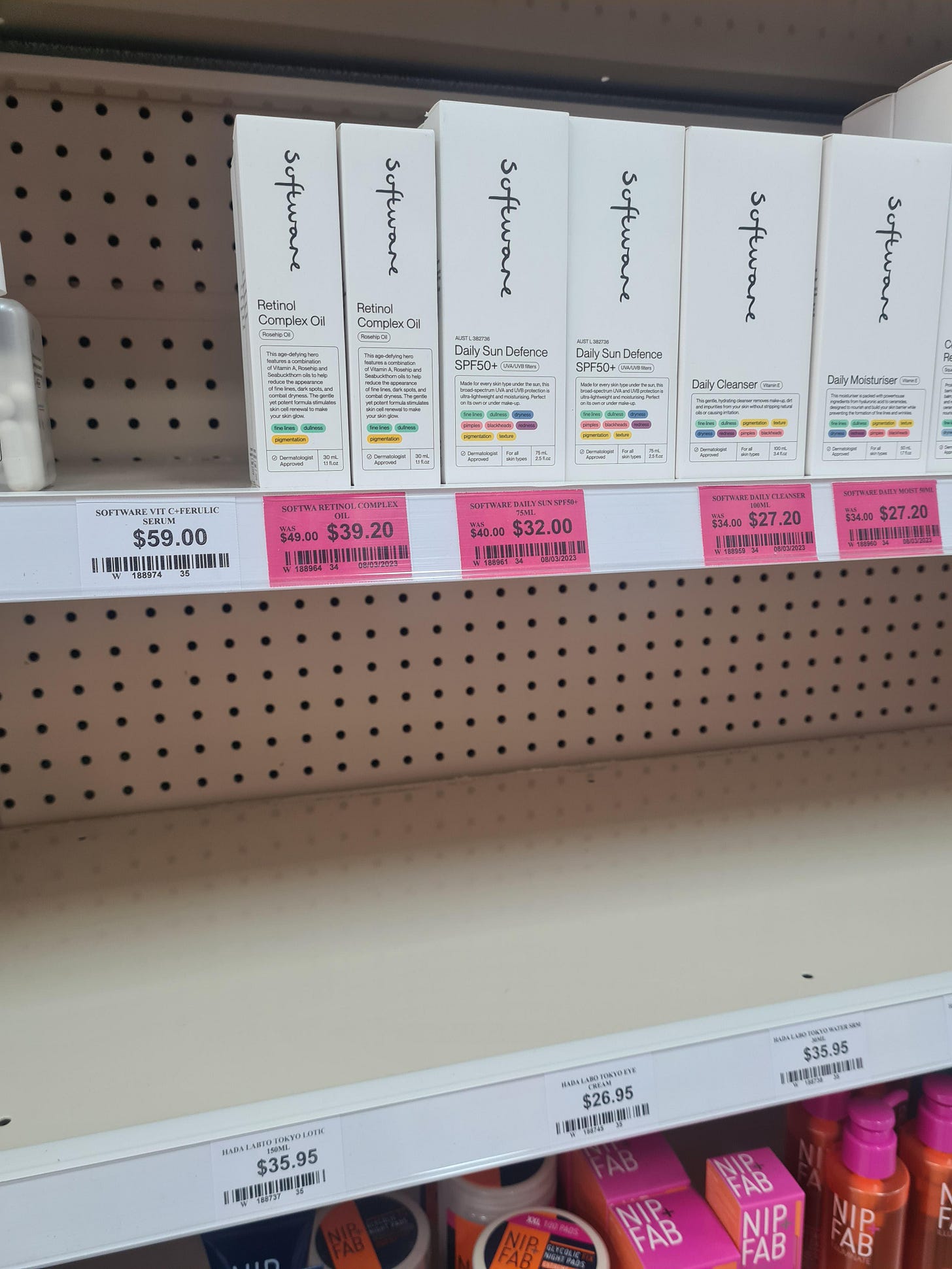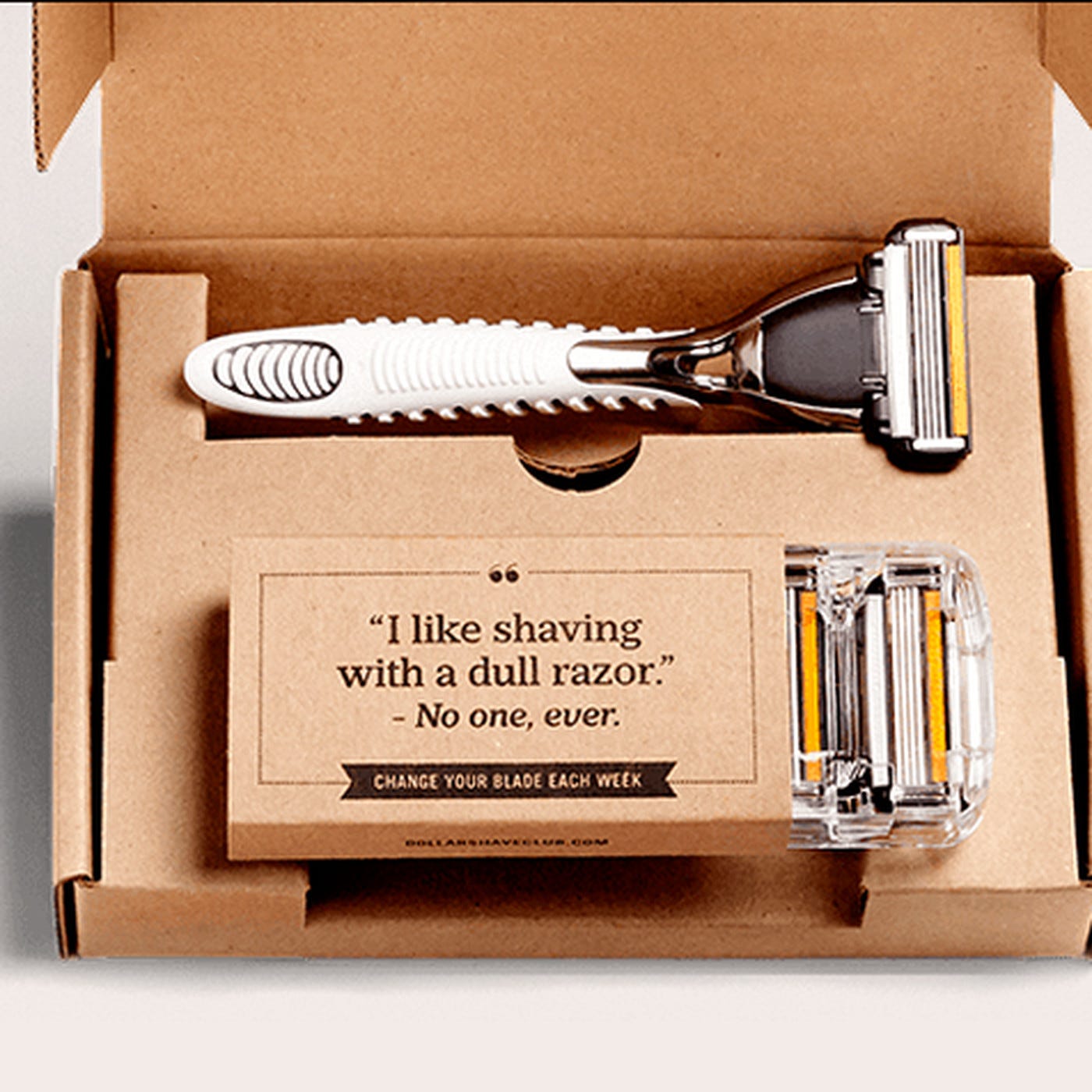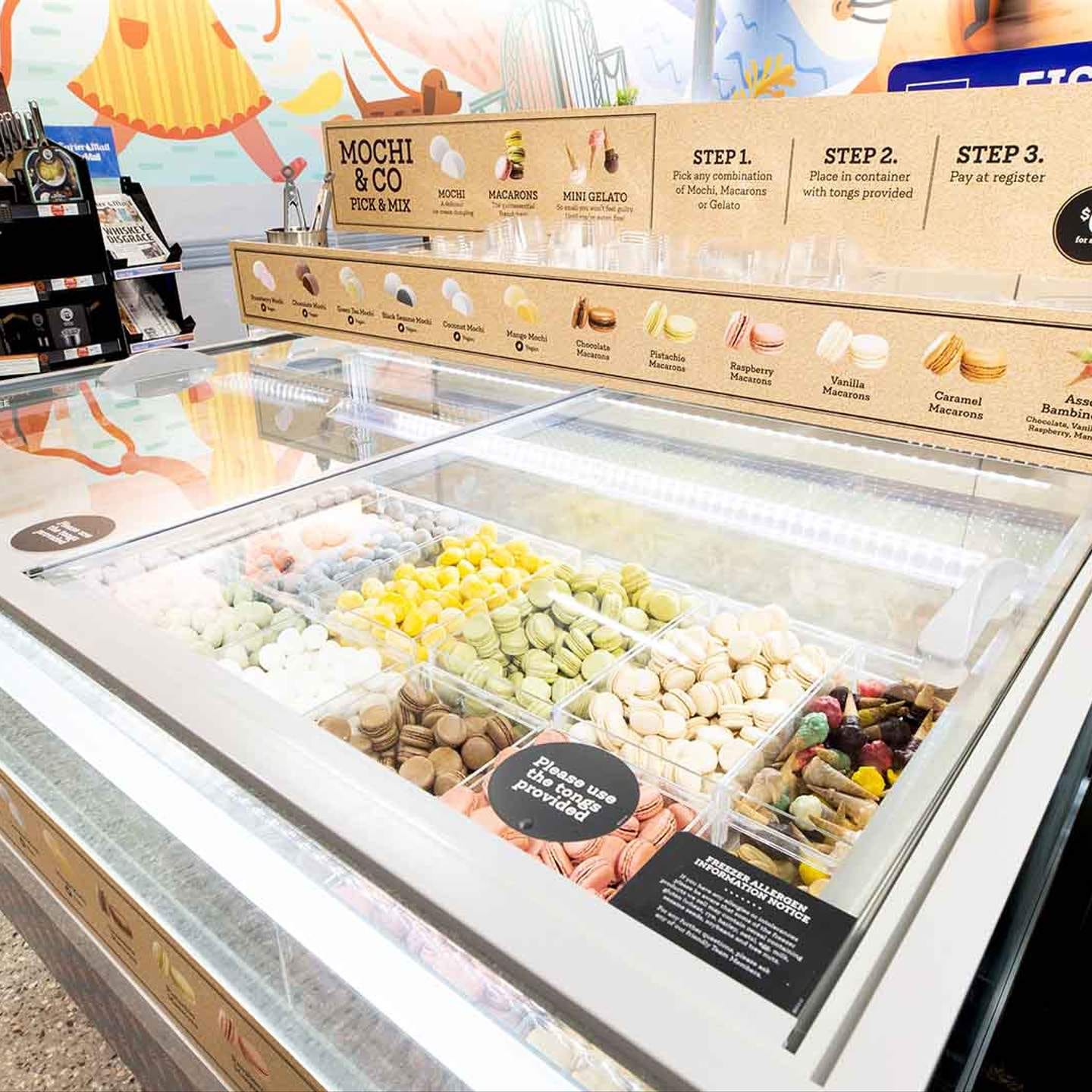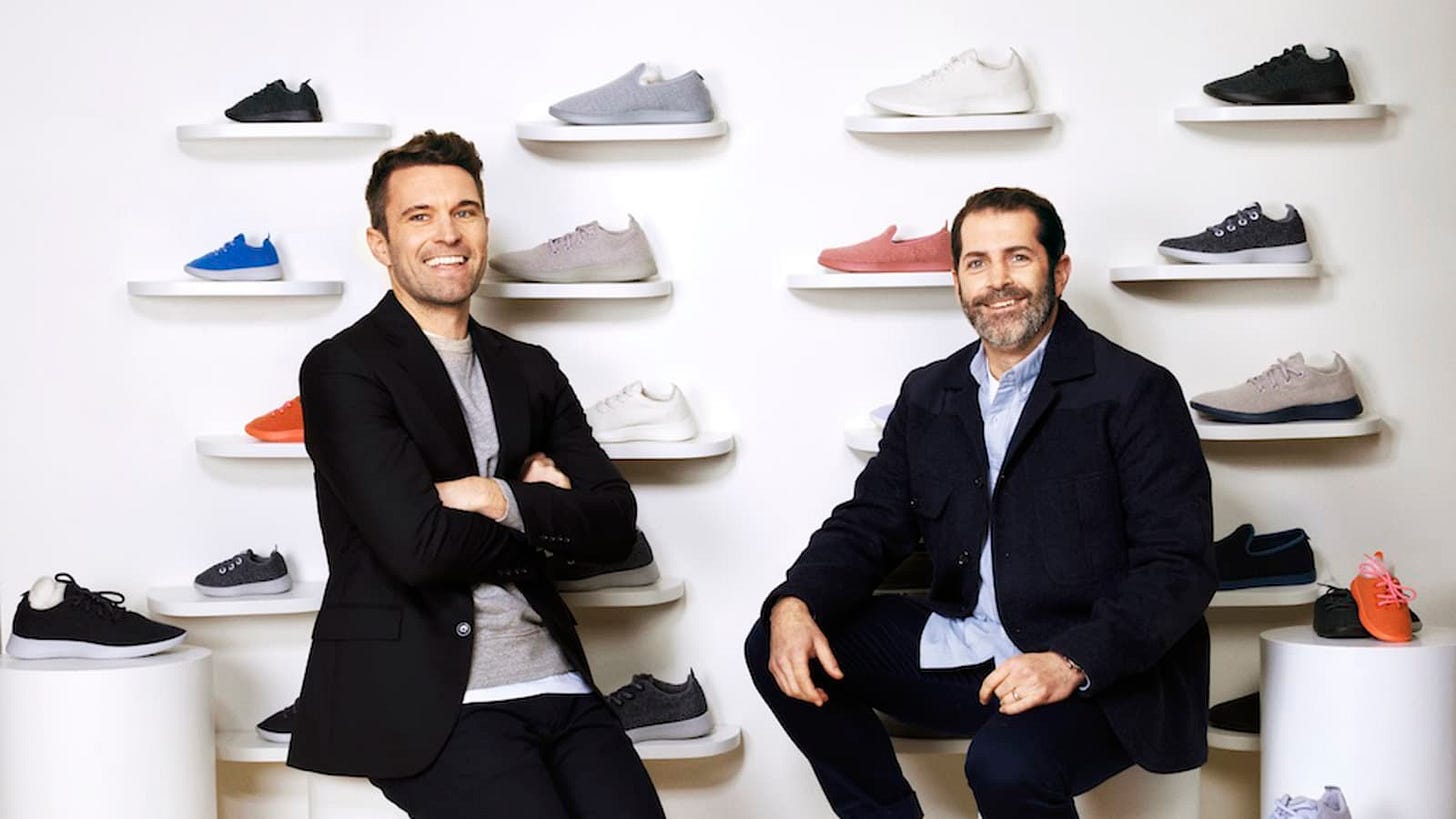The Future of Direct to Consumer
Direct-to-consumer businesses once burned bright, but have fallen out of favour among VC investors. This article explores how D2C companies can continue to innovate to build a lasting advantage.
For a while, we couldn’t get enough direct-to-consumer packaged goods. Direct-consumer (D2C) businesses are businesses that sell directly to their customers, generally online, primarily through their own channel. This is contrasted to ‘retail’ businesses that sell through ‘brick and mortar’ stores - including shops they do not own (e.g. supermarkets and department stores.
D2C newcomers served up cool, innovative products, with punchy brands at cheaper prices than their in store competitors. Casper showed us just how affordable, easy and ‘unboring’ buying a mattress could be. Warby Parker halved the price of subscription glasses while also offering a trendy alternative to Specsavers, and Dollar Shave Club dished out alarmingly cheap razors, alongside a healthy dose of irreverence and attitude.
We lapped it up. These brands seemed like they were on our side. They cut out the middle men, had some fun as they went, and we - consumers - were the lucky benefactors.
In these early days, conditions were immensely favourable for D2C founders. There was no set playbook, but it was cheap to acquire customers, Shopify and Stripe handled fundamentals like building a eCommerce website and taking payments, and dropshipping partners made it easy to start doing business.
But, like all good things, those glory days came to an end.
Varying levels of doom and gloom shroud the current conversation around direct to consumer product companies, but we remain optimistic about the potential of D2C; particularly when reimagined through creativity and ambition. What started as a business model innovation is becoming an acquisition channel, and businesses are having to do more to keep pace with consumer interests. The way we see it - that’s a good thing.
What changes are afoot
It’s getting harder to make money
As competition got more intense and more businesses (both D2C and traditional ‘brick and mortar’ companies) started using Facebook and Google ads to acquire customers, the cost to acquire customers through digital channels has gone through the roof, at the expense of margins.
Competition for customers is just one element of the crunch: global supply chains were disrupted by COVID and then the war in Ukraine, raw material costs are high, and shipping costs are exorbitant. Costs have been pushed up, while consumers expect prices to stay low. This not-so-perfect storm has lead to serious margin compression. Where early D2C companies made it look like they were printing money, newer entrants are discovering it’s not a walk in the park.
What was a business model is now a channel
Companies are starting to recognise that D2C represents just one distribution channel in a healthy, sustainable business. With distribution and low prices no longer a sufficient ‘moat’, companies have had to work on owning relationships with consumers, differentiating at the product level, and exploring channels such as in-person retail experiences.
We still love to hit the shops
The COVID pandemic changed our shopping habits: we were forced to peruse online, and get comfortable with having purchases large and small delivered to our homes. We were romanced by straight-talking cult brands, egged on by user reviews, and many older generations got comfortable with finding what they wanted online.
But as shops have opened again, many people remembered they quite like going to the shops: having conversations with real people, touching products, trying things on. In-person retail experiences create inspiration and connection, and people still want it.
But retail is also changing: rather than myopically focus on driving purchases, brands are recognising that stores should offer their customers more than products, but inspire feelings that lead to buy-in and loyalty. Stores are experimenting with interactive displays, in store theatre, and immersive digital experiences.

Even supermarkets are catching on: with Instagrammable product displays, eye-catching refill stations, and cafe-like setups that boost dwell time.
Marketing gives way to operational excellence
The first wave of D2C businesses won through a core product offering and well-executed performance marketing playbook. However, as their marketing advantage is being eroded, there’s a renewed focus on other areas of business excellence: product innovation, brand marketing, and tight operational control are required for direct to consumer businesses to cement their advantage.
Who Will Win
Those who let go of their ‘direct-to-consumer’ identity and cleverly embrace retail
Direct to consumer isn’t going away, it’s evolving from a business model to a key channel in a broader distribution strategy. Brands that have staying power will enjoy a mix of sales from online, retail, and distribution partners. Ten years ago, D2C was positioned as in competition with retail: now retail can be reimagined as an entry point for customers, or a place where in-person experiences deepen customers’ buy-in to a brand.

Companies embracing a 3-speed marketing approach
Brands used to get by with conversion-focused performance marketing - such as Facebook ads and search engine ads. Now, they must approach a 3-speed marketing approach, each with different objectives and timelines.
Brand marketing: Building a business that people feel emotionally connected to, one that stands for something beyond the product it sells.
Product marketing: Telling your product story in a way that highlights your differentiation or quality, and builds trust. This is designed to build awareness and drive medium to long term consideration.
Performance marketing: Conversion-driven marketing where the goal is to get customers to make a purchase, now.

Companies building a moat
Many D2C businesses use third party manufacturers, acquire customers using similar marketing messages, push them through a familiar purchasing journey, and deliver products through a third party fulfilment centre and delivery company. It’s been rare to see true product differentiation, or an operational edge that significantly improves the customer experience.
Now we’re a decade into the D2C gold rush, building a deeper moat is essential. When it’s easy for ‘copycats’ to duplicate a successful idea under a new brand, it’s impossible to stop your advantage being eroded away unless you invest in building a moat.
Those who are thinking for the long term are investing in their own manufacturing capabilities; this allows them to keep manufacturing costs down, shorten R&D cycles, innovate products faster, while preserving margins.
Deep personalisation
One of the ways D2C brands made us feel special was by allowing us to customise what we wanted, by building our own bundles or packaging our own subscriptions. Then came tailored formulations and even custom-made packaging, all to make us feel more seem, and more likely to share on Insta. Some companies who executed on this included Stitch Fix, which sends customers a bundle of clothes chosen for their style and body measurements, or Birchbox, which sent customers a personalised mix of cosmetics to try each month.

The AI wave will doubtlessly continue to evolve how personalisation is done: recommendations that are more astute and accurate, or anticipating customers’ needs before they even arise.
Who is making waves?
We’re surrounded by many D2C companies we admire, and we’ve invested in several: Lyka (pet wellness products, on subscription), Vitruvian (a connected resistance trainer), Tirtyl (Australia’s leader in tablet soaps and household cleaners), and more.
Here is a snippet of companies we think are doing a great job of innovating on the D2C business model and building generational companies:
Eight Sleep - Just when we thought mattress companies had run its course, Eight Sleep launches a highly differentiated product that has attracted rave reviews - including from insomniacs who swear it’s given them a new lease on life.
Ovira - Provides drug free pain relief from menstrual pain. It has executed a highly effective brand marketing strategy through its Tiktok channel that has amassed more than 6 million followers, and regularly posts irreverent educational content about periods, sex, and women’s health.
Oura - The Oura ring started with sleep tracking, but now provides three daily scores that guide users’ to better understand and navigate their health. It is quickly becoming synonymous with taking an intentional, scientific approach to health and fitness - a critical pillar of its users’ identifies.
Prose - A pioneer in the world of personalized hair care, Prose combines data-driven formulas with natural ingredients to create customized products tailored to each customer's unique needs. Through an interactive online consultation, users receive a shampoo, conditioner, and hair mask made specifically for their hair type and goals.
Allbirds - With a focus on sustainability and comfort, Allbirds has quickly become a leading name in eco-friendly footwear. Known for their minimalist designs and use of innovative materials like eucalyptus tree fiber and merino wool, Allbirds has gained a loyal following of environmentally-conscious consumers who appreciate the brand's dedication to reducing their carbon footprint.
Glossier - Glossier offers a line of skincare and makeup products that celebrate individuality and self-expression. Glossier built their brand off the back of their community. They recognised that beauty influencers were the heart and soul of their brand and offer, so held open studios in LA that invited beauty vloggers to create content using their professional equipment, free of charge.
Normal - this sexual wellness brand has made a habit of bold, provocative marketing. Not only do they sell sex toys, they are leading the charge on understanding and destigmatising sex. Their Big Sex Survey engaged over 1,000 Aussies, from Gen Z, to Boomers and beyond, to better understand the nation's thoughts on sex, sexuality, and pleasure.
Our predictions - 10 years from now
D2C eCommerce and ‘brick and mortar’ retail will both continue to exist - consumers will come to expect being able to access their favourite products through multiple channels - both online an in person. It’ll be easy to buy certain kinds of products online (particularly consumables, which you might buy on a subscription basis), but ambitious companies will also tap into the spontaneity of offline retail to bring new customers into their ecosystem.
A new set of table-stakes will emerge for companies selling consumer packaged goods:
Socially conscious - consumers will expect brands to offset emissions or be carbon positive, or sync with other ESG initiatives. Consumers will reward products that are build in more sustainably ways, like Paravel luggage which is made from recycled water bottles.
Collective buying - We see communities pooling their buying power to collectively buy goods; each individual will benefit from coordinate delivery and greater negotiating power. Chinese company Pinduoduo has already pioneered this, allowing villages to collectively buy household necessities such as toilet paper.
Retail-taiment - The best in-person retail experiences will come to resemble museums or galleries; store managers will curate art, culture, and product with panache. For example, Samsung 837 is a futuristic, interactive playground located in New York City's Meatpacking District. It offers a unique, immersive brand experience that is difficult to forget. Rather than focusing on sales, Samsung 837 serves as a showcase for the brand's latest technology and innovations. Upon entering the space, visitors are greeted by a massive, three-story digital screen displaying vibrant visuals. The various zones within the building allow guests to explore Samsung's cutting-edge products, like smartphones, tablets, wearables, VR headsets, and home appliances.
Dynamic advertising - through connected devices and wearables, we’ll see more AI assisted retail prompts that are dynamic and adaptive. We hope that consent will take a front seat and the value exchange will become more transparent - think being able to ‘opt-out’ of special offers when you walk past Starbucks at 8am.
Customers will be able to exchange opt-ins for the commensurate business value. For example, imagine 'opting into cookie sharing with a brand, converting at a lower marketing cost, and then paying less for their product. Influencer networks like Tribe are already experimenting with this model.
Seamless payments - picture yourself walking into the store, waltzing out with what you want, and the whole flow happens without an overt payment step. Amazon stores are already pioneering this.
We’ll see more enhanced and right-sized recommendation engines and customer flows. These will go beyond clunky “other people bought” suggestions to recommendations that move you closer to your personal goals and values, while also respecting your constraints - money, time and effort.
After sales - the same amount of effort that goes into acquiring customers will go into ensuring they are happy on the other side. This ‘after care’ moment will allow brands to activate loyalists, while also delivering a memorable branded experience.
The world will keep getting smaller - third party providers of operations, finance, and logistics support will allow brands to be available all over the world, without incurring a huge expense.
Our predictions - 50 years from now
Many pundits are predicting something resembling post-scarcity in 50 years: where we spend large swathes of time in a metaverse, products and experiences can be personalised for every individual, and AI-powered production facilities can satisfy every conceivable whim, instantly.
Shopping experiences in the metaverse will be incredibly immersive and interactive. Consumers will be able to explore virtual storefronts that are fully customisable, allowing brands to create unique and engaging environments that cater to each individual's preferences. Virtual try-ons and holographic product demos will become the norm, enabling customers to assess the look, fit, and functionality of items before making a purchase.
AI-driven personal shopping assistants will be commonplace, helping users navigate the vast metaverse marketplace. These digital companions will offer personalized recommendations based on a deep understanding of each customer's preferences, habits, and needs. They will also serve as an interface between the customer and the brand, handling inquiries, managing transactions, and providing exceptional after-sales support.
The proliferation of AI could also lead to the rise of on-demand manufacturing and near-instant delivery. When customers make a purchase, AI-powered production facilities will be able to produce items tailored to individual specifications in real-time, while advanced drone or autonomous delivery systems will ensure rapid delivery.
In this futuristic scenario, products alone will not be enough to stoke desire. The concept of scarcity and exclusivity will be tied not to physical products - but to experiences, connections with other humans, and intangible values.
In an age where everyone has access to tailored products and experiences, true exclusivity will lie in the ability to offer consumers something genuinely unique and meaningful - that cannot be replicated or mass-produced.
Enjoyed reading AfterWork’s thoughts on the Future of Direct to Consumer?










Nice write up